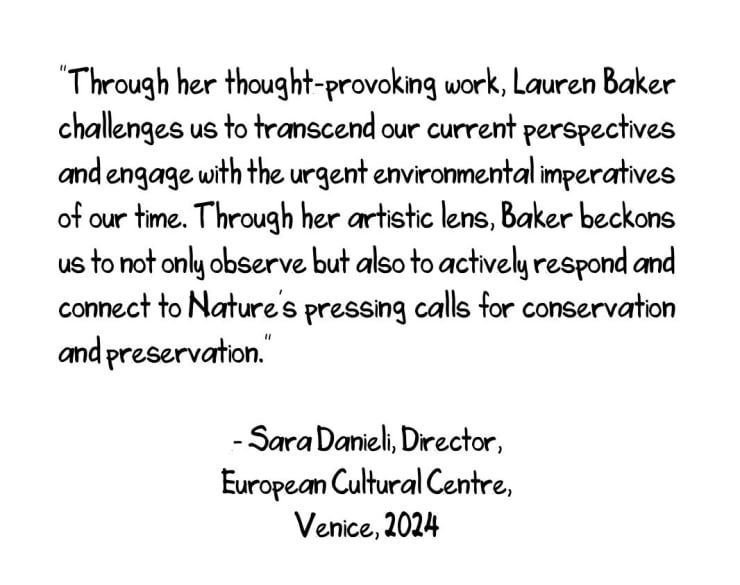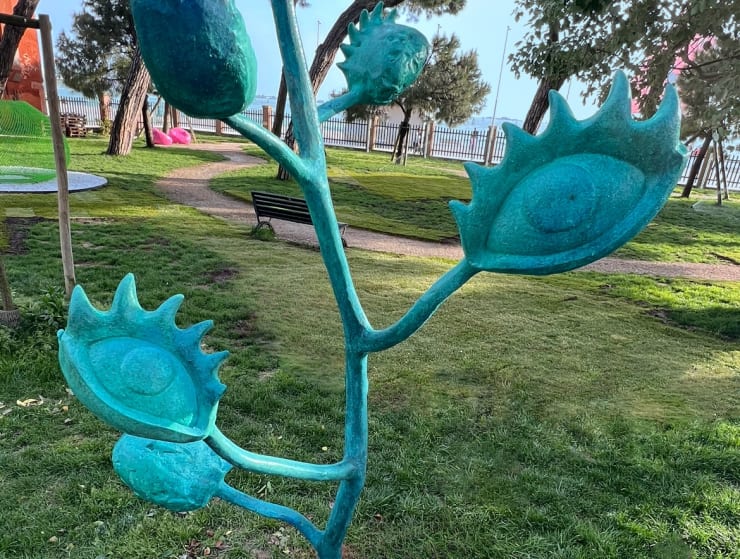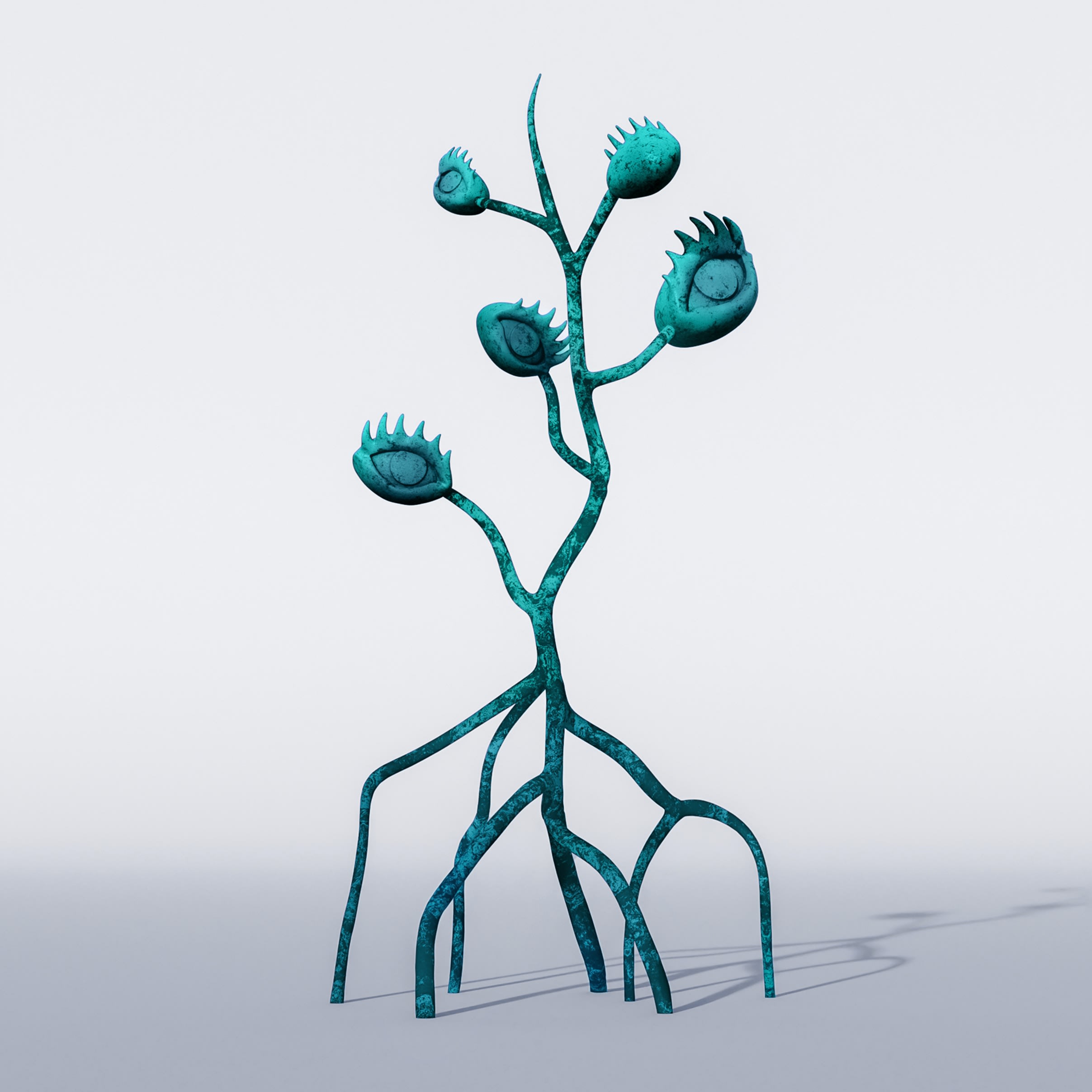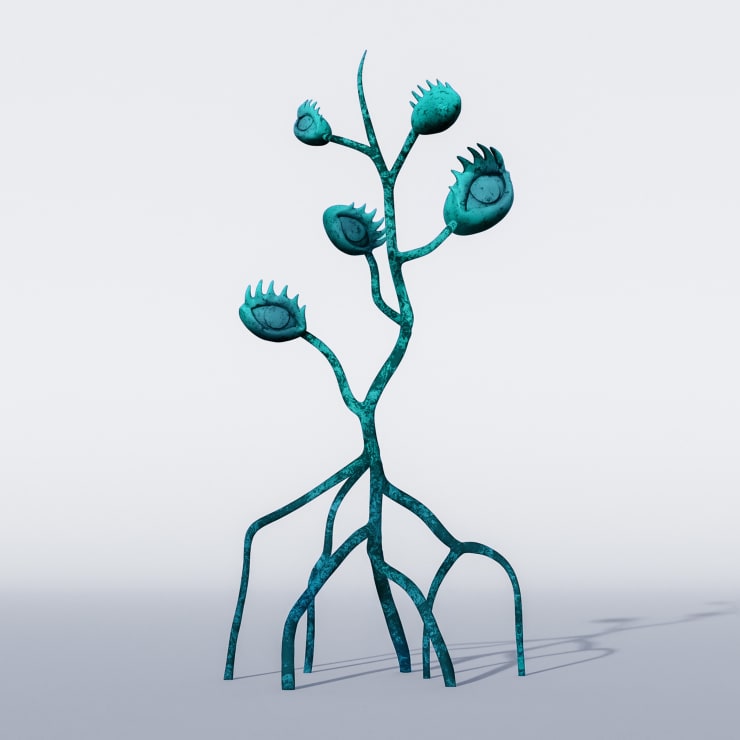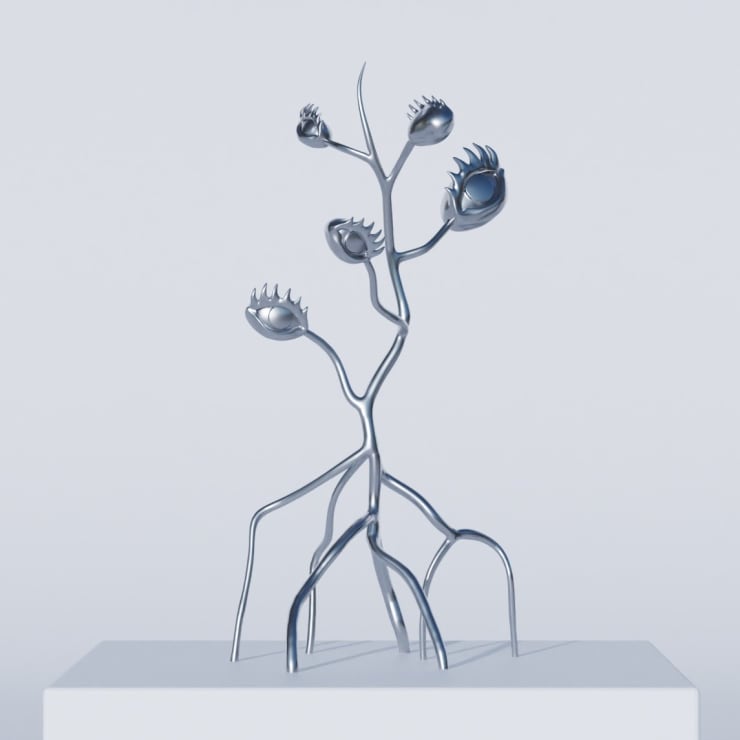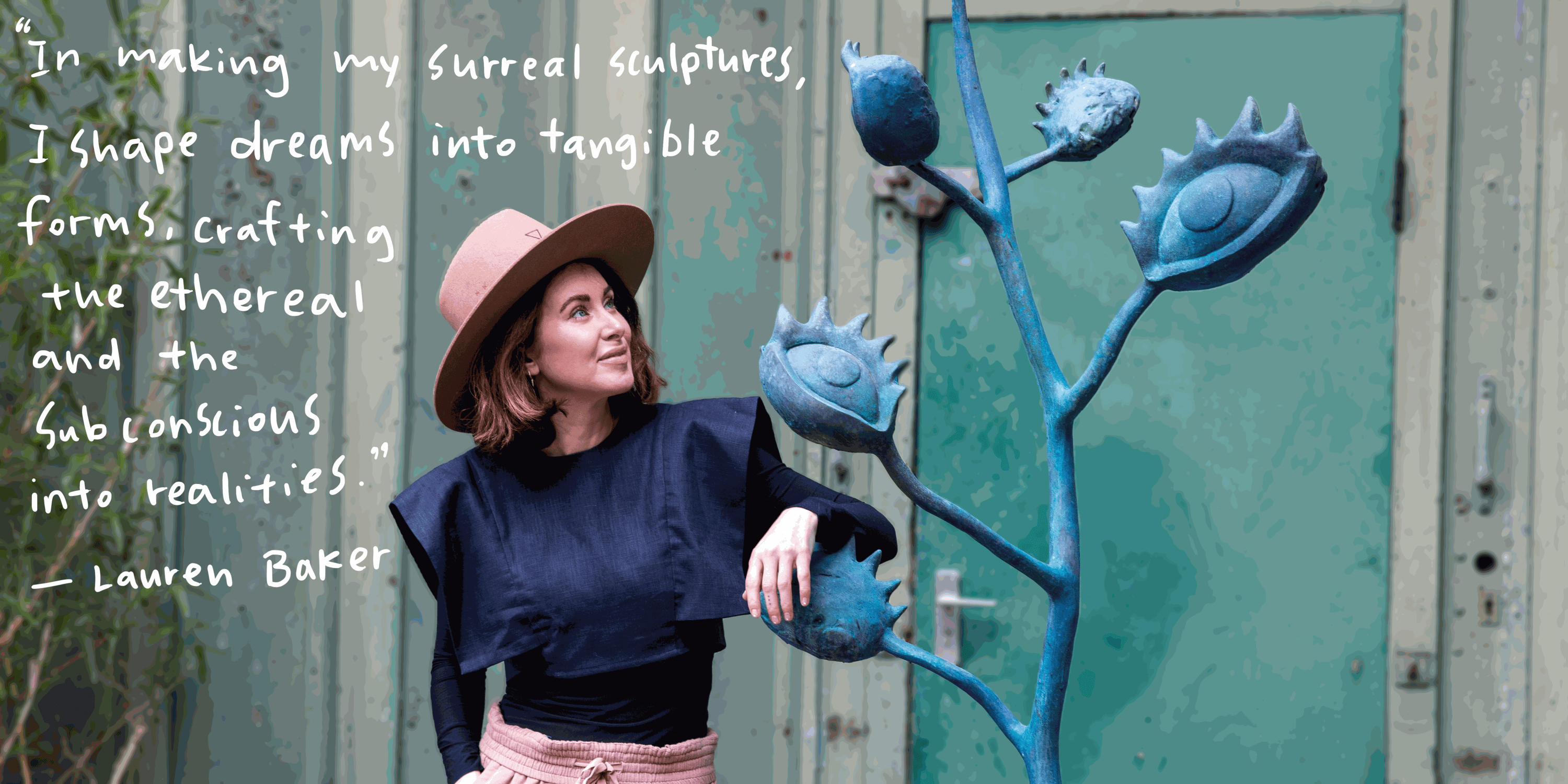Culminating in Conscousness Awakening, at The Art Biennal in Venice, Lauren Baker's Nature is Watching series focuses on our shared responsibility to the planet, prompting introspection into the impact of our actions on the delicate balance of ecosystems.
-
Consciousness Awakening
At The Art Biennial, Venice 2024Rooted in a connection nature, the bronze sculpture features multiple eyes sprouting from a plant, imbuing it with an enigmatic and surreal aura. Inspired by the folkloric reverance given to silver birch and aspen, known as "The Watchful Tree", Consciousness Awakwning embodies nature's vigilance. Symbolising the aliveness of the natural world, the eyes prompt viewers to embrace their role as guardians of earth's rich biodiversity. The sculpture propmpts viewers to contemplate their role as foreigners in the vast tapestry of existence, transcending borders and embracing a sense of interconnectedness with the natural world. -
'Nature is Watching' Series
-
'Nature is Watching': an Overview
by Curator, James PutnamThe bond between human beings and the natural world has inspired Lauren Baker’s new series of metal sculptures where numerous eyes emerge from a tree-like plant. This is based on the idea of 'The Watchful Tree’ mentioned in mediaeval literature and myths where trees were perceived as guardians of ancient wisdom, and conduits between the earthly realm and the divine. They were considered to be perceptive, symbolising a spiritual connection to the land and capable of communicating with humans.
In Northern European folklore trees were regarded as wise beings that people would seek counsel from, believing they possessed insight and guidance. This encouraged a profound respect for nature and influenced cultural practices such as tree worship and rituals performed in sacred groves. Humans have an enduring fascination with the enigmatic and enduring presence of trees that witness and silently comprehend the passage of time, seasons, and human existence. The notion of trees with eyes remind us of our responsibility to preserve and respect the ecosystems that sustain life and it is as if they oversee the natural world with a watchful gaze. ‘The Watchful Tree’ relates specifically to the silver birch and the aspen, because of the ‘eyes’ that seem to gaze from these trees' trunks, which are formed either by natural bark- markings, or the healed scars left by dropped branches. The sculptures evoke a mysterious and dreamlike quality that is reminiscent of surrealist art, which explored the interplay between disparate elements, like trees and human bodies. This relationship is underscored by the configuration of the tree’s roots and branches that are reminiscent of the veins and arteries found in the human body. This invites the viewer to contemplate the complex relationship between humans and the natural world thereby conveying a deeper understanding of existence, mortality, and the interconnectedness of all living things.
Trees are symbols of resilience, growth, and the delicate balance of ecosystems, prompting us to contemplate our relationship with the natural world. These sculptures raise awareness about environmental issues such as deforestation, climate change, and biodiversity loss. They also serve as reminders of the beauty and fragility of our planet, encouraging us to reflect on our effect and responsibility toward preserving nature for future generations. Forests were often portrayed as having a sort of consciousness or awareness, actively watching or listening to the activity of humans. They were also seen as places where the boundary between the human world and the realm of the supernatural becomes blurred. Together with their eye motif. Baker’s sculptures symbolise nature’s vigilance and the vitality of the natural world, where the eyes suggest their role as guardians of earth’s rich biodiversity. They also prompt us to contemplate our own role as foreigners in the vast fabric of existence, transcending national borders and embracing a sense of interconnectedness with the natural world.


